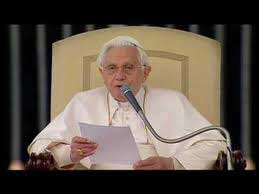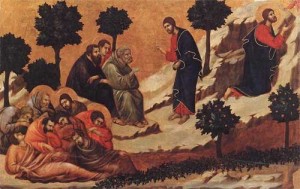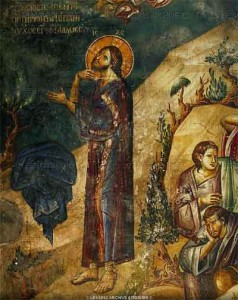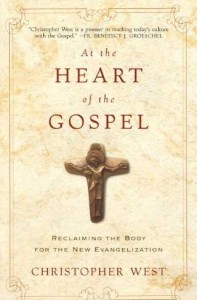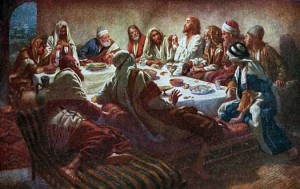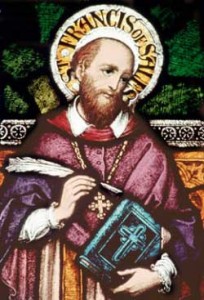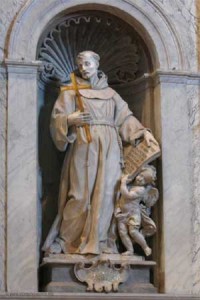VATICAN CITY, 1 FEB 2012 (VIS) – This morning in the Paul VI Hall the Holy Father received thousands of pilgrims from around the world in his weekly general audience. As part of a series of catecheses dedicated to the prayers pronounced by Christ, he focused his remarks on Jesus’ prayer in the Garden of Gethsemane.
Mark the Evangelist narrates how, following the Last Supper, Jesus went to the Mount of Olives and readied Himself for personal prayer. “But this time”, the Pope said, “something new occurred; it seemed that He did not want to remain alone. Many times in the past Jesus had moved away from the crowds, even from His own disciples. … However, in Gethsemane he invited Peter, James and John to stay close by; the same disciples who had accompanied Him during the Transfiguration.
“The proximity of these three during the prayer at Gethsemane is significant”, Benedict XVI added. It represents “a request for solidarity at the moment in which He felt the approach of death. Above all it was a closeness in prayer, an expression of unity with Him at the moment in which He was preparing to accomplish the Father’s will to the end, an invitation to all disciples to follow Him on the path of the Cross”.
Jesus’ words to the three disciples – “I am deeply grieved, even to death; remain here and keep awake” – show that He was feeling “fear and anguish at that ‘Hour’, experiencing the ultimate profound solitude as God’s plan was being accomplished. Jesus fear and anguish comprehend all the horror that man feels at the prospect of his own death, its inexorable certainty and the perception of the burden of evil which affects our lives”.
Having invited His disciples to keep awake, Jesus moved away from them. Referring to the Gospel of St. Mark, the Pope noted that Jesus “threw Himself to the ground: a position for prayer which expresses obedience to the Father’s will, an abandonment of self with complete trust in Him”. Jesus then asks the Father that, if possible, the hour might pass from Him. “This is not just the fear and anguish of man in the face of death”, the Holy Father explained, “but the distress of the Son of God Who sees the terrible accumulation of evil He must take upon Himself, in order to overcome it and deprive it of power”.
In this context, Benedict XVI invited the faithful to pray to God, placing before Him “our fatigue, the suffering of certain situations and of certain days, our daily struggle to follow Him and to be Christians, and the burden of evil we see within and around us, that He may give us hope, make us aware of His closeness and give us a little light on life’s journey”.
Returning then to Jesus’ prayer, the Pope focused on “three revealing passages” in Christ’s words: “Abba, Father, for you all things are possible; remove this cup from me; yet, not what I want but what you want”. Firstly, Benedict XVI said, the Aramaic word “Abba” is used by children to address their fathers, “therefore it express Jesus relationship with God the
Father, a relationship of tenderness, affection and trust”. Secondly, Jesus’ words contain an acknowledgment of the Father’s omnipotence “introducing a request in which, once again, we see the drama of Jesus’ human will in the face of death and evil. … Yet the third expression … is the decisive one, in which the human will adheres fully to the divine will. … Jesus tells us that only by conforming their will to the divine will can human beings achieve their true stature and become ‘divine’. … This is what Jesus does in Gethsemane. By transferring human will to the divine will the true man is born and we are redeemed”.
When we pray the Our Father “we ask the Lord that ‘your will be done, on earth as it is in heaven’. In other words, we recognise that God has a will for us and with us, that God has a will for our lives and, each day, this must increasingly become the reference point for our desires and our existence. We also recognise that … ‘earth’ becomes ‘heaven’ – the place where love, goodness, truth and divine beauty are present – only if the will of God is done”.
In our prayers “we must learn to have greater trust in Divine Providence, to ask God for the strength to abandon our own selves in order to renew our ‘yes’, to repeat to Him ‘your will be done’, to conform our will to His. This is a prayer we must repeat every day, because it is not always easy to entrust oneself to the will of God”.
The Gospel says that the disciples were unable to remain awake for Christ, and Pope Benedict concluded his catechesis by saying: “Let us ask the Lord for the power to keep awake for Him in prayer, to follow the will of God every day even if He speaks of the Cross, to live in ever increasing intimacy with the Lord and bring a little of God’s ‘heaven’ to this ‘earth'”.
Following the catechesis the Holy Father delivered greetings in a number of languages to the pilgrims filling the Paul VI Hall. They included a group of British military chaplains, faithful from Hong Kong and South America, bishops friends of the Sant’Egidio Community from Europe, Asia and Africa, as well as young people and the sick.
AG/ VIS 20120201 (940)
The Discerning Hearts Blog
St. Brigid of Kildare, a strong, gentle heart – Discerning Hearts
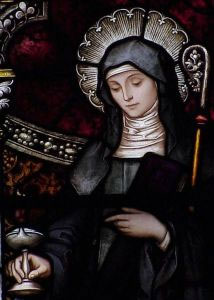 St. Brigid of Kildare, an extraordinary woman of faith, who was known for the beauty of her heart.
St. Brigid of Kildare, an extraordinary woman of faith, who was known for the beauty of her heart.
Daughter of Dubtach, pagan Scottish king of Leinster, and Brocca, a Christian Pictish slave who had been baptized by Saint Patrick. Just before Brigid’s birth, her mother was sold to a Druid landowner. Brigid remained with her mother till she was old enough to serve her legal owner Dubtach, her father.
She grew up marked by her high spirits and tender heart, and as a child, she heard Saint Patrick preach, which she never forgot. She could not bear to see anyone hungry or cold, and to help them, often gave away things that were Dubtach’s. When Dubtach protested, she replied that “Christ dwelt in every creature”. Dubtach tried to sell her to the King of Leinster, and while they bargained, she gave a treasured sword of her father’s to a leper. Dubtach was about to strike her when Brigid explained she had given the sword to God through the leper, because of its great value. The King, a Christian, forbade Dubtach to strike her, saying “Her merit before God is greater than ours”. Dubtach solved this domestic problem by giving Brigid her freedom.
Brigid’s aged mother was in charge of her master’s dairy. Brigid took charge ,and often gave away the produce. But the dairy prospered under her (hence her patronage of milk maids, dairy workers, cattle, etc.), and the Druid freed Brigid’s mother.
Brigid returned to her father, who arranged a marriage for her with a young bard. Bride refused, and to keep her virginity, went to her Bishop, Saint Mel of Ardagh, and took her first vows. Legend says that she prayed that her beauty be taken from her so no one would seek her hand in marriage; her prayer was granted, and she regained her beauty only after making her vows. Another tale says that when Saint Patrick heard her final vows, he mistakenly used the form for ordaining priests. When told of it he replied, “So be it, my son, she is destined for great things.”
Her first conven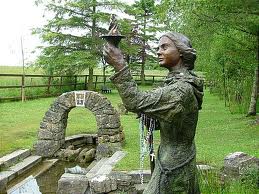 t started c.468 with seven nuns. At the invitation of bishops, she started convents all over Ireland. She was a great traveller, especially considering the conditions of the time, which led to her patronage of travellers, sailors, etc. Brigid invented the double monastery, the monastery of Kildara, which means Church of the Oak, that she ran on the Liffey river being for both monks and nuns. Saint Conleth became its first bishop; this connection and the installation of a bell that lasted over 1000 years apparently led to her patronage of blacksmiths and those in related fields.
t started c.468 with seven nuns. At the invitation of bishops, she started convents all over Ireland. She was a great traveller, especially considering the conditions of the time, which led to her patronage of travellers, sailors, etc. Brigid invented the double monastery, the monastery of Kildara, which means Church of the Oak, that she ran on the Liffey river being for both monks and nuns. Saint Conleth became its first bishop; this connection and the installation of a bell that lasted over 1000 years apparently led to her patronage of blacksmiths and those in related fields.
Litany of Saint Brigid of Kildare
This old litany is of unknown origin.
Lord, have mercy on us. Lord, have mercy on us. Christ, have mercy on us. Christ, have mercy on us. Lord, have mercy on us. Lord, have mercy on us. Christ, hear us. Christ, graciously hear us.
God the Father of Heaven, Have mercy on us. God the Son, Redeemer of the world, Have mercy on us. God the Holy Ghost, Have mercy on us. Holy Trinity, one God, Have mercy on us.
Holy Mary, Queen of virgins, Pray for us. Saint Brigid, Pray for us. Mary of the Gael, Pray for us. St. Brigid, Patroness of Ireland, Pray for us. St. Brigid, shining light of virtue and sanctity, Pray for us. St. Brigid, consecrated spouse of Jesus Christ, Pray for us. St. Brigid, foundress of Kildare, Pray for us. St. Brigid, cornerstone of the monastic institute in the Isle of Saints, Pray for us. St. Brigid, great model of Irish virgins, Pray for us. St. Brigid, mother of religious, Pray for us. St. Brigid, pattern of religious perfection, Pray for us. St. Brigid, intercessor for the Irish Church, Pray for us. St. Brigid, mediatrix for the Irish race, Pray for us. St. Brigid, protectress of the holy faith planted by Saint Padrig, Pray for us. St. Brigid, enjoying with him the clear vision of God, Pray for us. St. Brigid, whose one desire was to satisfy the poor, drive out hardship, and spare every miserable man, Pray for us.
Lamb of God, Who takest away the sins of the world: Spare us, O Lord. Lamb of God, Who takest away the sins of the world: Graciously hear us, O Lord. Lamb of God, Who takest away the sins of the world: Have mercy on us, O Lord.
Christ, hear us. Christ, graciously hear us.
V. Pray for us, O glorious Saint Brigid: R. That we may be made worthy of the promises of Christ.
Let us pray. O God, Who dost rejoice with the memory of the blessed Saint Brigid, Thy virgin and abbess, mercifully grant that we may be assisted by her merits, by whose chastity we are illumined. Through Jesus Christ Thy Son Our Lord. R. Amen.
St. Brigid of Kildare, a strong, gentle heart
 St. Brigid of Kildare, an extraordinary woman of faith, who was known for the beauty of her heart.
St. Brigid of Kildare, an extraordinary woman of faith, who was known for the beauty of her heart.
Daughter of Dubtach, pagan Scottish king of Leinster, and Brocca, a Christian Pictish slave who had been baptized by Saint Patrick. Just before Brigid’s birth, her mother was sold to a Druid landowner. Brigid remained with her mother till she was old enough to serve her legal owner Dubtach, her father.
She grew up marked by her high spirits and tender heart, and as a child, she heard Saint Patrick preach, which she never forgot. She could not bear to see anyone hungry or cold, and to help them, often gave away things that were Dubtach’s. When Dubtach protested, she replied that “Christ dwelt in every creature”. Dubtach tried to sell her to the King of Leinster, and while they bargained, she gave a treasured sword of her father’s to a leper. Dubtach was about to strike her when Brigid explained she had given the sword to God through the leper, because of its great value. The King, a Christian, forbade Dubtach to strike her, saying “Her merit before God is greater than ours”. Dubtach solved this domestic problem by giving Brigid her freedom.
Brigid’s aged mother was in charge of her master’s dairy. Brigid took charge ,and often gave away the produce. But the dairy prospered under her (hence her patronage of milk maids, dairy workers, cattle, etc.), and the Druid freed Brigid’s mother.
Brigid returned to her father, who arranged a marriage for her with a young bard. Bride refused, and to keep her virginity, went to her Bishop, Saint Mel of Ardagh, and took her first vows. Legend says that she prayed that her beauty be taken from her so no one would seek her hand in marriage; her prayer was granted, and she regained her beauty only after making her vows. Another tale says that when Saint Patrick heard her final vows, he mistakenly used the form for ordaining priests. When told of it he replied, “So be it, my son, she is destined for great things.”
Her first conven t started c.468 with seven nuns. At the invitation of bishops, she started convents all over Ireland. She was a great traveller, especially considering the conditions of the time, which led to her patronage of travellers, sailors, etc. Brigid invented the double monastery, the monastery of Kildara, which means Church of the Oak, that she ran on the Liffey river being for both monks and nuns. Saint Conleth became its first bishop; this connection and the installation of a bell that lasted over 1000 years apparently led to her patronage of blacksmiths and those in related fields.
t started c.468 with seven nuns. At the invitation of bishops, she started convents all over Ireland. She was a great traveller, especially considering the conditions of the time, which led to her patronage of travellers, sailors, etc. Brigid invented the double monastery, the monastery of Kildara, which means Church of the Oak, that she ran on the Liffey river being for both monks and nuns. Saint Conleth became its first bishop; this connection and the installation of a bell that lasted over 1000 years apparently led to her patronage of blacksmiths and those in related fields.
Litany of Saint Brigid of Kildare
This old litany is of unknown origin.
Lord, have mercy on us. Lord, have mercy on us. Christ, have mercy on us. Christ, have mercy on us. Lord, have mercy on us. Lord, have mercy on us. Christ, hear us. Christ, graciously hear us.
God the Father of Heaven, Have mercy on us. God the Son, Redeemer of the world, Have mercy on us. God the Holy Ghost, Have mercy on us. Holy Trinity, one God, Have mercy on us.
Holy Mary, Queen of virgins, Pray for us. Saint Brigid, Pray for us. Mary of the Gael, Pray for us. St. Brigid, Patroness of Ireland, Pray for us. St. Brigid, shining light of virtue and sanctity, Pray for us. St. Brigid, consecrated spouse of Jesus Christ, Pray for us. St. Brigid, foundress of Kildare, Pray for us. St. Brigid, cornerstone of the monastic institute in the Isle of Saints, Pray for us. St. Brigid, great model of Irish virgins, Pray for us. St. Brigid, mother of religious, Pray for us. St. Brigid, pattern of religious perfection, Pray for us. St. Brigid, intercessor for the Irish Church, Pray for us. St. Brigid, mediatrix for the Irish race, Pray for us. St. Brigid, protectress of the holy faith planted by Saint Padrig, Pray for us. St. Brigid, enjoying with him the clear vision of God, Pray for us. St. Brigid, whose one desire was to satisfy the poor, drive out hardship, and spare every miserable man, Pray for us.
Lamb of God, Who takest away the sins of the world: Spare us, O Lord. Lamb of God, Who takest away the sins of the world: Graciously hear us, O Lord. Lamb of God, Who takest away the sins of the world: Have mercy on us, O Lord.
Christ, hear us. Christ, graciously hear us.
V. Pray for us, O glorious Saint Brigid: R. That we may be made worthy of the promises of Christ.
Let us pray. O God, Who dost rejoice with the memory of the blessed Saint Brigid, Thy virgin and abbess, mercifully grant that we may be assisted by her merits, by whose chastity we are illumined. Through Jesus Christ Thy Son Our Lord. R. Amen.
IP#135 Christopher West – The Heart of the Gospel on Inside the Pages
Christopher West is a pioneer in the area known as “The Theology of the Body”, a teaching found in the Wednesday audiences of Bl. John Paul II over the course of many years. In “The Heart of the Gospel: Reclaiming the body of the New Evangelization”, Christopher shares his insights and deeper understandings found in over 20 years of experience with this work and it’s relevance for our faith lives today. In the course of the book, he also answers those objections to his approach in the past. He dives deeply into the teachings of Pope Benedict XVI, the teachings of the Saints, and above all, Sacred Scripture to find a richer expression of this important work and its message for our world today. Below is the complete interview I had with Christopher which lasted close to an hour. His humble, candid, honest approach to our discussion reveals his care and concern for the subject and great love for the work given to us by our late great Holy Father, Bl. John Paul II.
of Bl. John Paul II over the course of many years. In “The Heart of the Gospel: Reclaiming the body of the New Evangelization”, Christopher shares his insights and deeper understandings found in over 20 years of experience with this work and it’s relevance for our faith lives today. In the course of the book, he also answers those objections to his approach in the past. He dives deeply into the teachings of Pope Benedict XVI, the teachings of the Saints, and above all, Sacred Scripture to find a richer expression of this important work and its message for our world today. Below is the complete interview I had with Christopher which lasted close to an hour. His humble, candid, honest approach to our discussion reveals his care and concern for the subject and great love for the work given to us by our late great Holy Father, Bl. John Paul II.
Podcast: Play in new window | Download (Duration: 58:34 — 53.6MB) | Embed
Subscribe: Apple Podcasts | Spotify | Amazon Music | Android | Pandora | iHeartRadio | JioSaavn | Podchaser | Gaana | Podcast Index | Email | TuneIn | Deezer | Anghami | RSS | More
You can find Christopher’s book here
“The light of the Gospel, which is a clear but at times painful light, can illumine human sexuality to its very depth in order to transform it and bring it to its full beauty. Here lies the great strength of Blessed John Paul II’s Theology of the Body. In this peaceful and positive response to critics, Christopher West proves once again that he is a faithful and inspiring interpreter and communicator of this great pope’s teaching, a teaching so urgently needed for an effective proclamation of the Gospel.” —Christoph Cardinal Schönborn, cardinal archbishop of Vienna; general editor, Catechism of the Catholic Church; and grand chancellor, International Theological Institute for Studies on Marriage and the Family
“Christopher West has gone to the desert … and come back stronger than ever. Those who may previously have thought his work was one-sided in its celebration of the body and sexuality will find here, brought out more clearly than ever, the deep balance and integration that has always been the foundation of his work.” – Most Reverend Robert J. Carlson, Archbishop of Saint Louis, Chairman, USCCB Committee on Clergy, Consecrated Life and Vocations
IP#134 Dr. Thomas Kidd – Patrick Henry: First Among Patriots on Inside the Pages
During this time when we are asked to remember the value of our religious liberty, our conversation  with Dr. Thomas Kidd is an important one. Dr. Kidd gives us the life and passionate thought of “Patrick Henry: First Among Patriots”. Patrick Henry gave us the great rallying cry “Give me Liberty or Give me Death”, and yet many of us may not realize that he had huge reservations about the scope of the Constitution, because he feared it could one day seize that liberty and destroy it if allowed to go unchecked….very interesting. I found this to be a fascinating book. Would Patrick Henry’s concern turn out to be a prophetic one? Dr. Thomas Kidd handles his subject well, and presents the time, place and overall personality of Henry with clarity and insight in a very compelling read.
with Dr. Thomas Kidd is an important one. Dr. Kidd gives us the life and passionate thought of “Patrick Henry: First Among Patriots”. Patrick Henry gave us the great rallying cry “Give me Liberty or Give me Death”, and yet many of us may not realize that he had huge reservations about the scope of the Constitution, because he feared it could one day seize that liberty and destroy it if allowed to go unchecked….very interesting. I found this to be a fascinating book. Would Patrick Henry’s concern turn out to be a prophetic one? Dr. Thomas Kidd handles his subject well, and presents the time, place and overall personality of Henry with clarity and insight in a very compelling read.
Podcast: Play in new window | Download (Duration: 27:25 — 25.1MB) | Embed
Subscribe: Apple Podcasts | Spotify | Amazon Music | Android | Pandora | iHeartRadio | JioSaavn | Podchaser | Gaana | Podcast Index | Email | TuneIn | Deezer | Anghami | RSS | More
Dr. Thomas Kidd teaches history at Baylor University and is Senior Fellow at Baylor’s Institute for Studies of Religion. His newest book is Patrick Henry: First Among Patriots, published in 2011 with Basic Books. God of Liberty: A Religious History of the American Revolution was published in 2010, also by Basic Books. Additional recent books include American Christians and Islam, published in 2008 by Princeton University Press, The Great Awakening: The Roots of Evangelical Christianity in Colonial America, published by Yale University Press in 2007, and The Great Awakening: A Brief History with Documents, with Bedford Books in 2007. He is a contributor to patheos.com and has written op-eds for USA Today and the Washington Post.
You can find the book here
Wilfred M. McClay, SunTrust Chair of Excellence in Humanities, University of Tennessee at Chattanooga“His (Patrick Henry’a) historical reputation has suffered somewhat because of his opposition to the Constitution, but as Thomas Kidd shows in this vivid and lucid new biography, that judgment fails to do him justice. Indeed, his fears of the Constitution’s tendency toward consolidation and empire turned out to be well-founded, and the principal themes of his life, including his emphasis upon the cultivation of virtue and the protection of limited government, have never been more relevant. May this fine book lead to a long-overdue reconsideration of a great but neglected figure.”
Pope Benedict on Prayer 20 – Christian Unity Requires Individual Conversion: The priestly prayer of Jesus
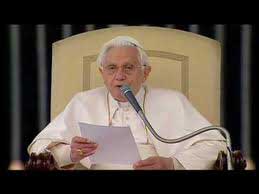
VATICAN CITY, 25 JAN 2012 (VIS) –
Benedict XVI dedicated his catechesis during this morning’s general audience to Christ’s priestly prayer during the Last Supper, as narrated in chapter 17 of the Gospel of St. John. In order to understand this prayer “in all its immense richness”, said the Pope, it is important to see it in the context of the Jewish feast of atonement, Yom Kippur, in which the high priest seeks atonement first for himself, then for the order of priests and finally for the community as a whole. Likewise, “that night Jesus addressed the Father at the moment in which He offered Himself. He, priest and victim, prayed for Himself, for the Apostles and for all those who would believe in Him”.
The prayer which Jesus prays for Himself is the request for His own glorification. “It is in fact more than a request”, the Holy Father said, “it is a declaration of willingness to enter freely and generously into the Father’s plan, which is accomplished through death and resurrection. …
Jesus begins His priestly prayer by saying: ‘Father, the hour has come; glorify your Son so that your Son may glorify you’. The glorification Jesus seeks for Himself, as High Priest, is to be fully obedient to the Father, an obedience which leads Him to fulfil His filial status: ‘So now, Father, glorify me in your own presence with the glory that I had in your presence before the world existed'”.
The second part of Jesus’ prayer is His intercession for the disciples who have followed Him, and His request that they may be sanctified. Jesus says: ‘They do not belong to the world, just as I do not belong to the world. Sanctify them in the truth’. Benedict XVI explained how “To sanctify means to transfer something – a person or an object – to God. This involves two complementary aspects: on the one hand, the idea of ‘segregation’ … from man’s personal life in order to be completely given over to God; on the other hand there is the idea of ‘being sent out’, of mission. Having been given to God, the consecrated thing or person exists for others. … A person is sanctified when, like Jesus, he is segregated from the world, set aside for God in view of a task and, for this reason, available for everyone. For disciples this means continuing Jesus’ mission”.
In the third phase of the priestly prayer, “Jesus asks the Father to intervene in favour of all those who will be brought to the faith by the mission inaugurated by the Apostles. … ‘I ask not only on behalf of these, but also on behalf of those who will believe in me through their word’. … Jesus prays for the Church in all times, He also prays for us. … The main element in Jesus’ priestly prayer for His disciples is His request for the future unity of those who will believe in Him. This unity is not a worldly achievement. It derives exclusively from divine unity and comes down to us from the Father, through the Son and in the Holy Spirit”.
By this priestly prayer Jesus establishes the Church, “which is nothing other than the community of disciples who, through their faith in Christ as the One sent by the Father, receive His unity and are involved in Jesus’ mission to save the world by leading it to a knowledge of God”.
Benedict XVI invited the faithful to read and meditate upon Jesus priestly prayer, and to pray to God themselves, asking Him “to help us enter fully into the plan He has for each of us. Let us ask Him to consecrate us to Himself, that we may belong to Him and show increasing love for others, both near and far. Let us ask Him to help us open our prayers to the world, not limiting them to requests for help in our own problems, but remembering our fellow man before the Lord and learning the beauty of interceding for others. Let us ask Him for the gift of visible unity among all those who believe in Christ, … that we may be ready to respond to anyone who asks us about the reasons for our hope”.
At the end of his audience, Benedict XVI delivered greetings in various languages to the pilgrims and faithful gathered in the Paul VI Hall, reminding them that today’s Feast of the Conversion of St. Paul marks the end of the Week of Prayer for Christian Unity. Addressing Polish faithful he said: “The conversion of the Apostle of the Gentiles near Damascus is proof that, in the final analysis, it is God Himself Who decides the destiny of His Church. Let us ask Him for the grace of unity, which also requires our individual conversion, while remaining faithful to the truth and love of God”.
AG/ VIS 20120125 (826)
Faith Check 32 – Organized Religion?
Organized Religion?
Podcast: Play in new window | Download (Duration: 1:05 — 1,012.3KB) | Embed
Subscribe: Apple Podcasts | Spotify | Amazon Music | Android | Pandora | iHeartRadio | JioSaavn | Podchaser | Gaana | Podcast Index | Email | TuneIn | Deezer | Anghami | RSS | More
It’s something we’ve all heard before: I believe in God, but not organized religion.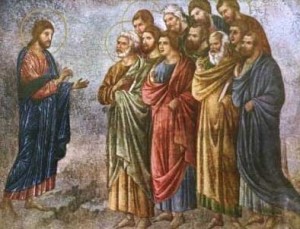
But as Catholics we believe that Jesus started a Church—yes an organized religion, if you will.
The Church is a gift to the world, which God has ordained as the vehicle in which we are sanctified and grow on the way to our heavenly destination.
Above all, the Catholic Church is a family. Man is not an island, as it was once famously said, and we need the community found in our brothers and sisters in the Faith.
A visible Church is necessary for the dispensing of the seven sacraments, which Jesus instituted for the forgiveness of sins and growth in grace.
And God has always desired that His people gather to give Him glory by corporate, liturgical worship and sacrifice, which is fulfilled in the New Covenant by the Holy Mass.
Yes, the organized institution of the Church has often had its share of scandals and sins. The human face of the Church can be messy and imperfect. But God does not desire for us to escape to a spiritual island or alternative religion, but to serve Him and His people in the Church He founded and has promised to be with until He returns in glory.
The Conversion of St. Paul
From the choral works of Z Randall Stroope
“The Conversion of Saul”
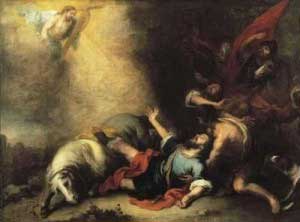 “Paul’s conversion matured in his encounter with the Risen Christ; it was this encounter that radically changed his life. What happened to him on the road to Damascus is what Jesus asks in today’s Gospel: Saul is converted because, thanks to the divine light, “he has believed in the Gospel”. In this consists his and our conversion: in believing in Jesus dead and risen and in opening to the illumination of his divine grace. In that moment Saul understood that his salvation did not depend on good works fulfilled according to the law, but on the fact that Jesus died also for him the persecutor and has risen. This truth by which every Christian life is enlightened thanks to Baptism completely overturns our way of life. To be converted means, also for each one of us, to believe that Jesus “has given himself for me”, dying on the Cross (cf. Galatians 2: 20) and, risen, lives with me and in me. Entrusting myself to the power of hisforgiveness, letting myself be taken by his hand, I can come out of the quicksands of pride and sin, of deceit and sadness, of selfishness and of every false security, to know and live the richness of his love.”( Pope Benedict XVI from address given on January 25, 2009)
“Paul’s conversion matured in his encounter with the Risen Christ; it was this encounter that radically changed his life. What happened to him on the road to Damascus is what Jesus asks in today’s Gospel: Saul is converted because, thanks to the divine light, “he has believed in the Gospel”. In this consists his and our conversion: in believing in Jesus dead and risen and in opening to the illumination of his divine grace. In that moment Saul understood that his salvation did not depend on good works fulfilled according to the law, but on the fact that Jesus died also for him the persecutor and has risen. This truth by which every Christian life is enlightened thanks to Baptism completely overturns our way of life. To be converted means, also for each one of us, to believe that Jesus “has given himself for me”, dying on the Cross (cf. Galatians 2: 20) and, risen, lives with me and in me. Entrusting myself to the power of hisforgiveness, letting myself be taken by his hand, I can come out of the quicksands of pride and sin, of deceit and sadness, of selfishness and of every false security, to know and live the richness of his love.”( Pope Benedict XVI from address given on January 25, 2009)

St. Francis de Sales, restoring the “universal call to holiness”
Denver, Colo., Jan 23, 2011 / 07:09 am (CNA/EWTN News).- On Jan. 24, during the Week of Prayer for Christian Unity that runs from Jan. 18-25, Catholics will celebrate the life of St. Francis de Sales. A bishop and Doctor of the Church, his preaching brought thousands of Protestants back to the Catholic fold, and his writings on the spiritual life have proved highly influential.
The paradoxical circumstances of Francis’ birth, in the Savoy region (now part of France) during 1567, sum up several contradictory tendencies of the Church during his lifetime. The reforms of the Council of Trent had purified the Church in important ways, yet Catholics and Protestants still struggled against one another – and against the temptations of wealth and worldly power.
Francis de Sales, a diplomat’s son, was born into aristocratic wealth and privilege. Yet he was born in a room that his family named the “St. Francis room” – where there hung a painting of that saint, renowned for his poverty, preaching in the wilderness. In later years, Francis de Sales would embrace poverty also; but early in his ministry, the faithful chided him for having an aristocratic manner.
In many ways, Francis’ greatest achievements – such as the “Introduction to the Devout Life,” an
innovative spiritual guidebook for laypersons, or his strong emphasis on the role of human love in Christian devotion – represent successful attempts to re-integrate seemingly disparate “worldly” and “spiritual” realities into one coherent vision of life.
Few people, however, would have predicted these achievements for Francis during his earlier years. As a young man, he studied rhetoric, the humanities, and law. He had his law degree by age 25, and was headed for a political career. All the while, he was keeping the depths of his spiritual life – such as his profound devotion to the Virgin Mary, and his resolution of religious celibacy – a secret from the world.
Eventually, however, the truth came out, and Francis clashed with his father, who had arranged a marriage for him. The Bishop of Geneva intervened on Francis’ behalf, finding him a position in the administration of the Swiss Church that led to his priestly ordination in 1593. He volunteered to lead a mission to bring Switzerland, dominated by Calvinist Protestantism, back to the Catholic faith.
Taking on a seemingly impossible task, with only one companion – his cousin – the new priest adopted a harsh but hopeful motto: “Apostles battle by their sufferings, and triumph only in death.” It would serve him well as he traveled through Switzerland, facing many Protestants’ indifference or hostility, and being attacked by wild animals and even would-be assassins.
Some of Francis’ hearers –even, for a time, John Calvin’s protege Theodore Beza– found themselves captivated by the thoughtful, eloquent and joyful manner of the priest who implored their reunion with the Church. But he had more success when he began writing out these sermons and exhortations, slipping them beneath the doors that had been closed against him.
This pioneering use of religious tracts proved surprisingly effective at breaking down the resistance of the Swiss Calvinists, and it is estimated that between 40,000 and 70,000 of them returned to the Church through his efforts. He also served as a spiritual director, both in person and through written correspondence, with the latter format inspiring the “Introduction to the Devout Life.”
In 1602, Francis was chosen to become the Bishop of Geneva, a position he did not seek or desire. Accepting the position, however, he gave the last twenty years of his life in ongoing sacrifice, for the restoration of Geneva’s churches and religious orders. He also helped one of his spiritual directees, the widow and future saint Jane Frances de Chantal, to found an order with a group of women.
Worn out by nearly thirty years of arduous travel and other burdens of Church leadership, Francis fell ill in 1622 while visiting one of a convent he had helped to found in Lyons. He died there, three days after Christmas that year. St. Francis de Sales was canonized in 1665, and honored as a Doctor of the Church in 1877.
Because of the crucial role of writing in his apostolate, St. Francis de Sales is the patron of writers and journalists. He is also widely credited with restoring, during his own day, a sense of what the Second Vatican Council would later call the “universal call to holiness” – that is, the notion that all people, not only those in formal religious life, are called to the heights of Christian sanctification. – CNA/EWTN News
A Prayer of St. Frances de Sales
Lord, I am yours,
and I must belong to no one but you.
My soul is yours,
and must live only by you.
My will is yours,
and must love only for you.
I must love you as my first cause,
since I am from you.
I must love you as my end and rest,
since I am for you.
I must love you more than my own being,
since my being subsists by you.
I must love you more than myself,
since I am all yours and all in you.
AMEN.
Meditations from the Introduction to the Devout Life by St. Francis de Sales
IP#133 Greg and Julie Alexander – Marriage 911 on Inside the Pages
In “Marriage 911: How God Saved Our Marriage (and can save yours, too!)”, we meet  Greg and Julie Alexander, a great and courageous couple. They candidly share the trials of what they felt was a lifeless, loveless marriage on the verge of divorce. Married in the Church, they began the process of seeking a way out of their union. Unexpectedly they encountered a faithful caring priest, who shared with them the Church’s understanding of marriage, and through incoporating those truths, revived and revitalized their sacramental relationship and their family as well. Now married over 20 years, they offer emergency hope and guidance to couples struggling in a similar conditions through their “Alexander House” non-profit marriage and family life enrichment apostolate. Visit their outstanding website http://www.thealexanderhouse.org/
Greg and Julie Alexander, a great and courageous couple. They candidly share the trials of what they felt was a lifeless, loveless marriage on the verge of divorce. Married in the Church, they began the process of seeking a way out of their union. Unexpectedly they encountered a faithful caring priest, who shared with them the Church’s understanding of marriage, and through incoporating those truths, revived and revitalized their sacramental relationship and their family as well. Now married over 20 years, they offer emergency hope and guidance to couples struggling in a similar conditions through their “Alexander House” non-profit marriage and family life enrichment apostolate. Visit their outstanding website http://www.thealexanderhouse.org/
Podcast: Play in new window | Download (Duration: 27:42 — 25.4MB) | Embed
Subscribe: Apple Podcasts | Spotify | Amazon Music | Android | Pandora | iHeartRadio | JioSaavn | Podchaser | Gaana | Podcast Index | Email | TuneIn | Deezer | Anghami | RSS | More
Their breakthrough work in marriage has been featured on EWTN and talk radio, as well as in many publications, including Patrick Madrid s Surprised by Truth 3, Envoy, Catholic Herald, Denver Catholic Register, and Our Sunday Visitor.
You can find the book here

